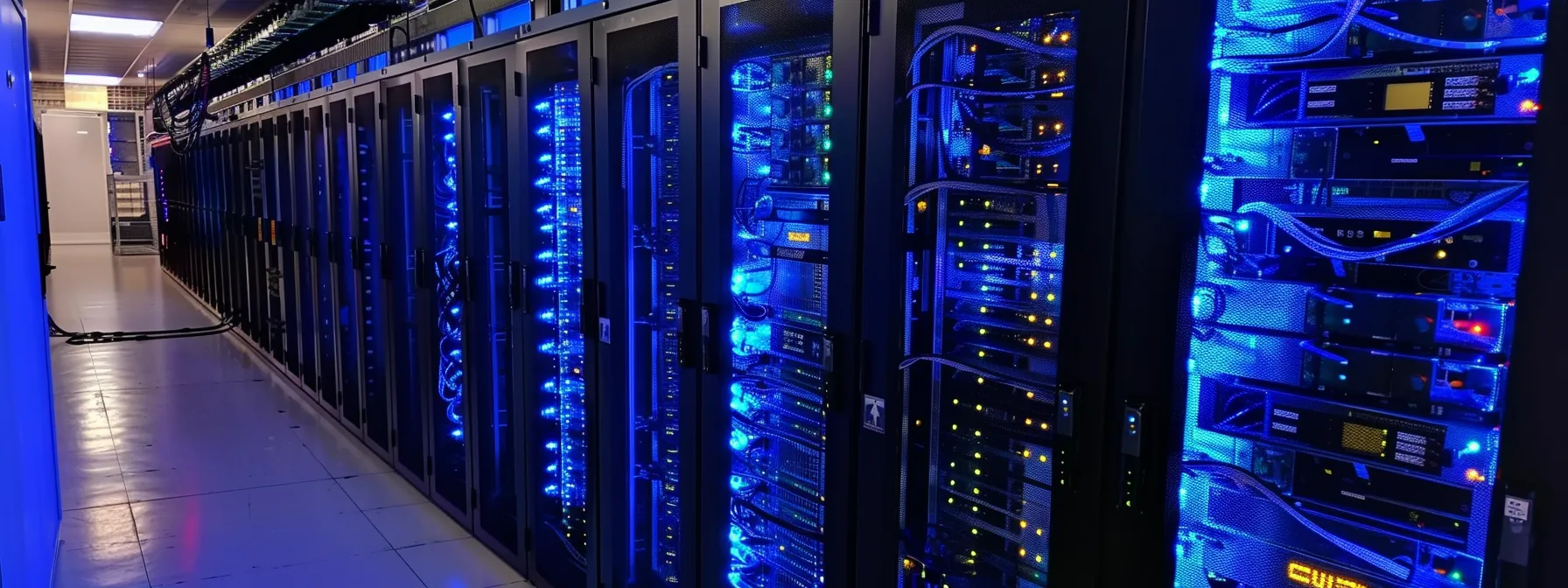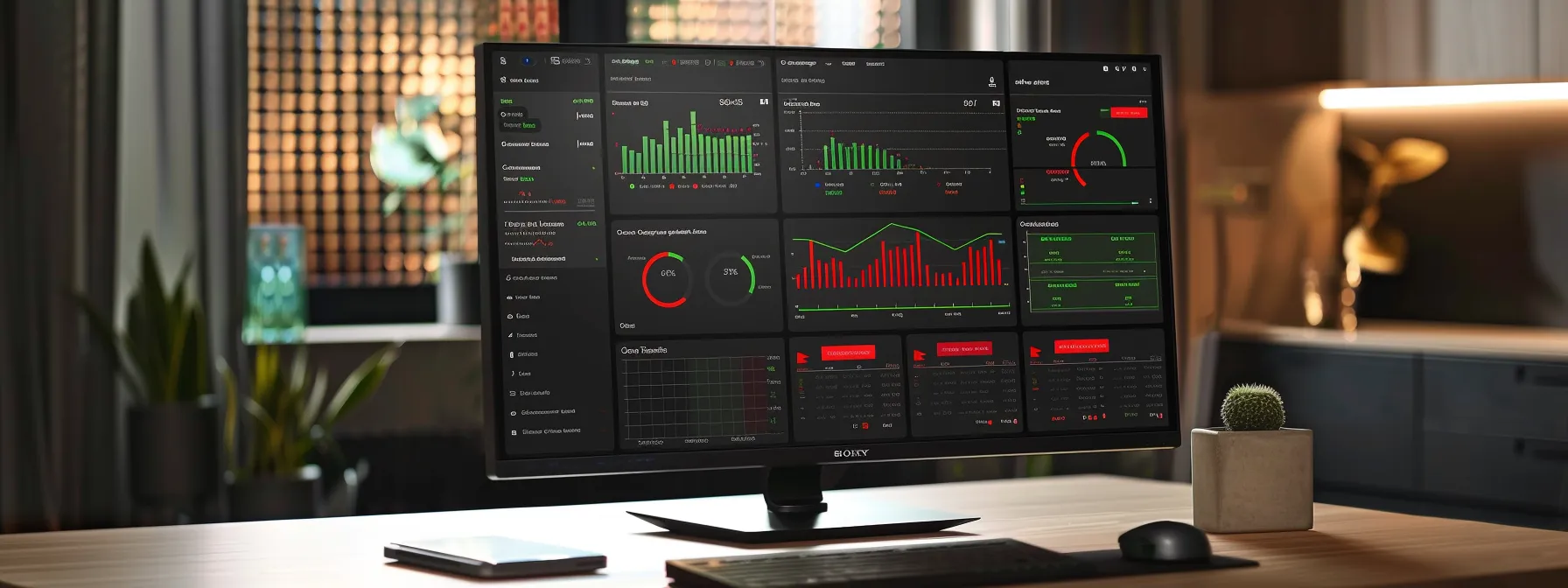In today’s digital landscape, the threat of ransomware looms large, with remote work amplifying the risk of data extortion. This post delves into the latest ransomware trends and offers key strategies for safeguarding your data. Readers will learn about proactive cybersecurity measures, the importance of employee awareness, and the role of advanced backup solutions. By understanding these critical defense mechanisms, you can protect your organization from the costly consequences of a ransomware attack. The insights provided here aim to equip you with the tools for robust data protection, ensuring your business’s resilience against these pervasive threats.
Key Takeaways
- Regular updates and patching are essential defenses against ransomware
- Employee education on cyber threats is crucial for organizational security
- Multi-factor authentication significantly reduces the risk of unauthorized access
- Regular testing of incident response plans ensures preparedness for ransomware attacks
- Coordinating with law enforcement can enhance response to and prevention of cyberattacks
Analyze Current Ransomware Trends for Effective Defense

In the dynamic landscape of cyber threats, understanding the latest ransomware trends is critical for robust defense. This analysis will identify emerging ransomware variants and recognize common attack vectors of 2023, including the misuse of virtual private networks and the principle of least privilege. It will assess ransomware’s impact across industries, examine recent high-profile incidents, and understand the motivations driving ransomware groups. Additionally, the evolution of ransomware techniques will be evaluated, providing insights into their complex infection mechanisms targeting computers and networks.
Identify Emerging Ransomware Variants
As threat actors continually refine their strategies, the National Security Agency has observed a proliferation of sophisticated ransomware variants. These malicious programs are designed to bypass traditional security measures, compelling organizations to reevaluate their defense policies. The Office of Foreign Assets Control has underscored the risks associated with ransomware payments, prompting a reexamination of response strategies to mitigate the threat to national security. It is imperative for entities to stay informed about these emerging variants to fortify their cybersecurity frameworks effectively.
Recognize Common Attack Vectors in 2023
In 2023, the adoption of the zero trust security model has become increasingly vital as organizations strive to counteract sophisticated cyber threats. Research indicates that attackers are exploiting vulnerabilities in remote desktop protocols and leveraging weak encryption practices to gain unauthorized access to sensitive data. The telecommunications sector, in particular, has seen a rise in such incidents, underscoring the need for robust security measures that assume no trust within or outside the network’s perimeters.
Assess the Impact of Ransomware on Different Industries
The impact of ransomware on various industries has been profound, with risk management becoming a top priority for organizations seeking to safeguard their operations. In the healthcare sector, for instance, the theft of sensitive patient data can have dire consequences, prompting institutions to invest heavily in cybersecurity measures. The Federal Bureau of Investigation has noted an uptick in ransomware attacks targeting government agencies, leading to disruptions in public services and demands for substantial payments. These incidents underscore the critical need for industries to implement comprehensive security protocols to mitigate the risks associated with these malicious threats.
Examine Recent High-Profile Ransomware Incidents
Recent statistics reveal that high-profile ransomware incidents have escalated, with organizations facing substantial ransom payments to retrieve access to their data. One notable example is the LockBit ransomware, which has targeted numerous entities by exploiting weak passwords and security vulnerabilities. These incidents not only cripple the affected organization’s operations but also serve as a stark reminder of the importance of robust cybersecurity measures and the need for continuous monitoring and updating of defense strategies to protect against such threats.
Understand the Motivations Behind Ransomware Attacks
Understanding the motivations behind ransomware attacks is essential for developing effective defense strategies. Often, these cyberattacks are driven by the lure of financial gain, with attackers demanding payment in exchange for decrypting data. The healthcare industry, with its wealth of sensitive patient information, has become a prime target, leading to significant downtime and disruption of critical services. The integration of artificial intelligence in cyber threat detection systems is becoming a necessity to predict and prevent such attacks before they can cause harm.
The following points outline the progression of a typical ransomware attack:
- An attacker identifies a vulnerability within a network, often through phishing or exploiting outdated software.
- The ransomware is deployed, encrypting data and demanding payment for its release.
- If the ransom is paid, there is no guarantee that data will be decrypted or that the cyber threat is fully neutralized.
Evaluate the Evolution of Ransomware Techniques
The evolution of ransomware techniques in the cybercrime landscape has become a significant concern for finance and management professionals. Initially, ransomware attacks were relatively straightforward, locking down a server or data until a ransom was paid. However, recent trends show a shift towards more sophisticated methods, such as multi-stage attacks that involve data exfiltration and double extortion, where attackers not only encrypt data but also threaten to release it publicly unless additional demands are met. This progression necessitates a proactive approach to cybersecurity, with organizations investing in advanced detection systems and employee training to recognize and mitigate threats before they escalate.
For those managing sensitive financial data, understanding these advanced ransomware techniques is crucial to protect assets and maintain client trust. The following table illustrates the typical stages of a ransomware attack and the evolved techniques attackers employ:
| Stage | Traditional Technique | Evolved Technique |
|---|---|---|
| 1. Initial Access | Phishing emails | Spear phishing, social engineering |
| 2. Deployment | Simple encryption | Advanced encryption, multi-stage payloads |
| 3. Extortion | Single ransom demand | Double extortion, data leak threats |
Implement Proactive Cybersecurity Measures Today

In the face of escalating ransomware threats, businesses must adopt proactive cybersecurity measures to safeguard their data. Strengthening network security through segmentation, regularly updating and patching systems, and applying multi-factor authentication are critical steps in fortifying defenses. Additionally, configuring firewalls and intrusion detection systems, enforcing strong password policies, and limiting access privileges based on necessity are essential practices. These strategies, highlighted by The Wall Street Journal as effective against phishing and other cyber threats, are even more pertinent with the advent of Windows 11 and increased scrutiny from law enforcement. The following sections delve into the practical application of these measures, providing a blueprint for organizations to enhance their cybersecurity posture.
Strengthen Network Security Through Segmentation
In the realm of cybersecurity, segmenting a network is a strategic move to isolate and protect sensitive information from threat actors, particularly in the context of the burgeoning ‘ransomware as a service’ ecosystem. By dividing a network into smaller, controlled zones, organizations can limit a threat actor’s access to personal data and critical systems, effectively containing and mitigating the spread of ransomware. This approach not only strengthens the overall security posture but also ensures that, even in the event of a breach, the damage is confined and the integrity of the wider network remains intact.
Update and Patch Systems Regularly
Regular updates and patching of systems are essential defenses against ransomware, as they close security gaps that could be exploited by attackers. Users must be vigilant, ensuring that all software, especially those connected to the internet, are up-to-date with the latest security patches. Managed Service Providers (MSPs) play a crucial role in this process, monitoring for vulnerabilities and deploying patches swiftly to prevent dark web actors from gaining access through outdated credentials or unpatched exploits.
Consider the following table to understand the relationship between system updates and ransomware defense:
| System Component | Risk of Not Updating | Benefit of Regular Patching |
|---|---|---|
| Operating System | High vulnerability to new ransomware variants | Reduces attack surface with up-to-date defenses |
| Applications | Potential for credential theft and data breaches | Secures user data and maintains software integrity |
| Network Infrastructure | Increased risk of widespread system compromise | Strengthens barriers against unauthorized access |
Apply Multi-Factor Authentication Across Systems
In the United States and beyond, the implementation of multi-factor authentication (MFA) across systems has become a cornerstone of cybersecurity. This method adds a critical layer of security that goes beyond traditional password protection, requiring users to provide multiple forms of verification before gaining access to sensitive data. By integrating MFA, organizations can significantly reduce the risk of unauthorized access, a common entry point for ransomware attacks. The practice is particularly relevant in fields such as software engineering and customs, where the protection of intellectual property and sensitive information is paramount. Moreover, as blockchain technology advances, incorporating MFA can provide an additional safeguard for the decentralized networks that are increasingly prevalent in various sectors.
For those in software development and related industries, the benefits of MFA are clear: it serves as a robust defense mechanism against the sophisticated tactics employed by cybercriminals. To illustrate the effectiveness of multi-factor authentication in preventing ransomware breaches, consider the following steps:
- Verification through something the user knows (password or PIN).
- Verification through something the user has (security token or mobile app).
- Verification through something the user is (biometric data such as fingerprints or facial recognition).
Configure Firewalls and Intrusion Detection Systems
Configuring firewalls and intrusion detection systems is a critical step in defending against ransomware threats, as evidenced by the Colonial Pipeline ransomware attack. These security measures serve as a vigilant guard, monitoring network traffic to prevent unauthorized access and detect malicious activities. Organizations are increasingly adopting endpoint detection and response solutions to identify and respond to threats in real time, effectively countering the tactics of ransomware groups like Conti. By prioritizing these defenses, entities can create a robust barrier against cyber threats, ensuring the safety of their data and continuity of operations.
Enforce Strong Password Policies Organization-Wide
Enforcing strong password policies across an organization is a fundamental aspect of information security that significantly reduces the risk of unauthorized access through social engineering tactics. By mandating complex passwords and regular changes, end users become a robust line of defense against cyber threats. Additionally, incorporating password management tools and educating staff on the importance of password security can bolster an organization’s resilience to ransomware attacks, ensuring that backup systems and sensitive data remain protected.
Limit Access Privileges Based on Necessity
Limiting access privileges based on necessity is a critical strategy in mitigating the risk of ransomware attacks. By conducting thorough risk assessments, organizations can identify which employees require access to specific data, thereby reducing the attack vector for cybercriminals. Managed services providers advocate for the principle of least privilege, ensuring that access is granted only to the extent necessary for job functions. This approach not only curtails potential internal threats but also strengthens defenses against supply chain attacks, which can have costly repercussions if sensitive data is compromised.
Enhance Employee Awareness to Prevent Attacks

To effectively combat the surge in ransomware attacks, organizations must prioritize employee education as a cornerstone of their cybersecurity strategy. Regular cybersecurity trainings, coupled with the promotion of safe email and web practices, are essential in equipping staff with the knowledge to identify and avoid potential threats. Simulating phishing attacks can test the readiness of employees, while encouraging the reporting of suspicious activities fosters a proactive security culture. Additionally, understanding social engineering tactics is vital, as it strengthens the human element of the defense against exploits that target the software supply chain. These measures, alongside considerations for outsourcing cybersecurity tasks, evaluating cyber insurance, and securing the supply chain, are critical in developing a culture of cybersecurity vigilance.
Conduct Regular Cybersecurity Trainings
Regular cybersecurity trainings are a pivotal component in the defense against ransomware, equipping employees with the knowledge to recognize and respond to cyber threats. By incorporating insights from intelligence platforms like Recorded Future, organizations can stay ahead of emerging vulnerabilities and refine their strategies against attacks that demand cryptocurrency ransoms. Trainings that leverage machine learning can analyze past incidents to predict and prevent future breaches, ensuring that staff are not only aware but also proactive in their approach to cybersecurity.
For organizations to effectively mitigate the risk of ransomware, the following steps should be integrated into their cybersecurity training programs:
- Introduce employees to the concept of ransomware and its potential impact on the organization.
- Provide real-world examples of ransomware attacks, emphasizing the role of cryptocurrency in the extortion process.
- Teach staff to identify signs of phishing and other common attack vectors that could introduce ransomware into the system.
- Utilize intelligence reports from Recorded Future to demonstrate the importance of staying informed about the latest cyber threats.
- Highlight the significance of reporting any suspicious activity immediately to the IT department.
- Encourage the adoption of best practices for password management and software updates to reduce vulnerability.
- Discuss the advancements in machine learning and how they contribute to predictive cybersecurity measures.
Promote Safe Email and Web Practices
Instilling safe email and web practices is a critical step in fortifying an organization’s defenses against ransomware attacks. By training employees to scrutinize email attachments and links before engaging with them, organizations can significantly reduce the risk of falling victim to these crimes. The use of secure file transfer solutions like Moveit for sensitive data ensures that cybersecurity measures are in place to thwart unauthorized access. This proactive stance not only protects against the immediate threat of ransomware but also reinforces a culture of security awareness within the company.
Following the implementation of secure practices, organizations should consider these steps to maintain a vigilant stance against ransomware:
- Regularly update anti-virus and anti-malware software to detect and prevent ransomware threats.
- Implement email filtering systems to block potentially harmful communications.
- Conduct routine audits of web traffic to identify and address suspicious activity promptly.
Simulate Phishing Attacks to Test Readiness
To bolster the resilience of a business model against cyber threats, simulating phishing attacks is an invaluable strategy for testing the readiness of an organization’s operating system and its users. This proactive measure, often referred to as “phishing drills,” enables companies to assess how employees would react to an actual attack, drawing lessons from the infamous WannaCry ransomware attack. By incorporating threat intelligence into these simulations, organizations can provide realistic scenarios that help employees recognize and respond to sophisticated phishing attempts, thereby strengthening their human firewall.
| Phishing Simulation Component | Purpose | Outcome |
|---|---|---|
| Realistic Email Scenarios | To mimic actual phishing tactics used by attackers | Enhanced employee ability to identify suspicious emails |
| Response Tracking | To measure employee reactions to phishing attempts | Insights into training effectiveness and areas for improvement |
| Threat Intelligence Integration | To use recent and relevant examples of phishing methods | Preparedness against current and emerging threats |
Encourage Reporting of Suspicious Activities
In the United Kingdom, engineering firms are bolstering their incident response protocols by encouraging the reporting of suspicious activities. This initiative is crucial in identifying potential data exfiltration attempts and mitigating the risks associated with ransomware attacks. By fostering an environment where employees are vigilant and proactive, these organizations enhance their defense against cybercriminals, particularly those targeting cryptocurrency exchanges.
When an employee detects unusual behavior or receives a suspicious email, the following steps should be taken:
- Immediately report the incident to the designated cybersecurity team.
- Refrain from interacting with or forwarding the suspicious message.
- Preserve all evidence related to the potential security threat for further investigation.
Develop a Culture of Cybersecurity Vigilance
To effectively shield against ransomware, organizations must foster a culture of cybersecurity vigilance that permeates every level of the workforce. By integrating regular patch management into the workflow and educating employees on the evolving tactics of threat actors, companies can reinforce their technological defenses. This proactive stance on cyber security not only empowers employees to act as the first line of defense but also ensures that the organization’s data protection strategies evolve in tandem with the threats they face.
Educate on Social Engineering Tactics
To mitigate the risk of data breaches through social engineering, organizations must prioritize education on these deceptive tactics. Incorporating data loss prevention software, adhering to stringent laws, and utilizing tools from cybersecurity leaders like Sophos can enhance an organization’s infrastructure against such threats. The Cybersecurity and Infrastructure Security Agency (CISA) emphasizes the importance of training employees to recognize and respond to social engineering attempts, which are often the precursors to ransomware attacks. By doing so, companies can significantly reduce the likelihood of a successful breach, safeguarding their sensitive data and maintaining operational integrity.
Understanding the various forms of social engineering and their indicators equips employees to act as a critical line of defense against data compromise. The following table outlines common social engineering tactics and corresponding preventative measures that can be integrated into an organization’s cybersecurity training program:
| Social Engineering Tactic | Preventative Measure |
|---|---|
| Phishing Emails | Implement advanced email filtering and educate on scrutinizing unsolicited requests for information. |
| Pretexting | Train staff to verify identities and challenge unexpected requests for sensitive data. |
| Baiting | Encourage skepticism towards too-good-to-be-true offers and ensure secure software downloads. |
| Quid Pro Quo | Establish protocols for service requests and validate external communications through official channels. |
Utilize Advanced Backup Solutions for Data Recovery

In the wake of escalating threats from ransomware variants like DarkSide, Clop, and others, it is imperative for businesses to adopt advanced backup solutions for data recovery. This section will explore the importance of selecting appropriate backup strategies tailored to organizational needs, the necessity of regularly testing backup and restore processes, and the benefits of storing backups offline or on separate networks. It will also discuss the advantages of automating backup procedures to ensure reliability, implementing redundant data storage solutions, and securing backups against unauthorized access. These measures are not only crucial for data protection but also serve as a safeguard, akin to an insurance policy, against the potentially devastating effects of ransomware attacks.
Choose the Right Backup Strategies for Your Business
Selecting the right backup strategies is a cornerstone of business continuity planning, ensuring that organizations can recover quickly from a ransomware attack and minimize the attack surface for cybercriminals. A well-crafted backup strategy not only safeguards against data breaches but also serves as a financial shield, protecting businesses from the costly downtime associated with ransomware variants like REvil. By evaluating the specific needs of the business and implementing a tailored backup solution, companies can ensure that their critical data remains accessible, even in the face of a cyber assault.
For businesses to enhance their resilience against ransomware, the following steps are essential in developing a robust backup strategy:
- Conduct a thorough assessment of data criticality to determine which datasets are essential for operational continuity.
- Implement regular backup schedules that align with the frequency of data updates and the importance of the information.
- Choose a combination of on-site and off-site backups to diversify recovery options and reduce the risk of simultaneous compromise.
Test Backup and Restore Processes Frequently
Frequent testing of backup and restore processes is a critical step in ensuring data integrity and resilience against ransomware attacks. Cloud computing advancements have enabled organizations to simulate recovery scenarios, thereby validating the effectiveness of their data protection strategies. According to Trend Micro and IBM’s ransomware statistics, regular drills can significantly reduce the potential for data loss, providing businesses with the confidence that their backup solutions are both robust and reliable.
Store Backups Offline or on Separate Networks
Storing backups offline or on separate networks is a critical strategy for safeguarding critical infrastructure against malware attacks. By isolating backups from the main network, organizations protect their data from being compromised during a ransomware attack on their primary systems. This approach is particularly relevant for entities operating with Windows 10, as it enhances network security and ensures data protection even if the main system is breached.
For those responsible for maintaining organizational data integrity, the following steps are crucial for implementing offline or separate network backups:
- Identify and categorize sensitive data that requires stringent protection measures.
- Allocate dedicated storage devices or isolated network segments for backup purposes.
- Regularly update and test backup systems to confirm their effectiveness in a disaster recovery scenario.
Automate Backup Procedures for Reliability
Automating backup procedures enhances reliability, ensuring that critical data is preserved without the need for manual intervention, which can be prone to human error. This automation is particularly crucial in sectors where regulatory compliance and the security of Internet of Things (IoT) devices are paramount. By establishing automated systems, organizations can ensure that their data payloads are consistently backed up, providing a fail-safe in the event of a ransomware attack and maintaining the integrity of sensitive information.
Implement Redundant Data Storage Solutions
Implementing redundant data storage solutions is a strategic approach to ensure business continuity in the face of ransomware attacks. By creating multiple copies of data across different physical locations or storage systems, organizations can protect against data loss and facilitate rapid recovery. This redundancy not only serves as a critical component of a comprehensive data protection strategy but also provides peace of mind, knowing that even in the event of a cyberattack, essential data remains secure and recoverable.
Ensure Backups Are Secure From Unauthorized Access
Securing backups from unauthorized access is a pivotal aspect of ransomware defense, ensuring that recovery data remains intact and inaccessible to malicious actors. Organizations must implement stringent access controls, encryption, and regular audits to protect backup integrity. These measures not only prevent data breaches but also serve as a critical recovery resource in the event of a ransomware attack, maintaining the continuity of business operations.
For organizations to effectively safeguard their backups, the following steps should be taken:
- Encrypt backup data to prevent unauthorized decryption and access.
- Implement role-based access controls to restrict backup access to authorized personnel only.
- Conduct routine security audits to detect vulnerabilities and ensure backup systems are not compromised.
Employ Endpoint Protection and Monitoring Tools

In the battle against ransomware, employing robust endpoint protection and monitoring tools is essential. Selecting effective endpoint security software forms the foundation of a resilient defense. Continuous monitoring for suspicious activities, coupled with deploying anti-malware and anti-ransomware solutions, ensures vigilant surveillance against threats. Utilizing behavioral analytics aids in detecting anomalies, while keeping endpoint devices updated and secure mitigates vulnerabilities. Integrating these measures with an overall cybersecurity plan is crucial for comprehensive protection.
Select Effective Endpoint Security Software
Selecting effective endpoint security software is a critical step in safeguarding against ransomware threats. The ideal solution should offer comprehensive protection, including real-time scanning, advanced threat detection, and automated response capabilities. It is essential for organizations to choose software that integrates seamlessly with their existing systems, providing a robust defense without impeding productivity.
Monitor for Suspicious Activities Continuously
Continuous monitoring for suspicious activities is a critical component of an effective ransomware defense strategy. By employing advanced endpoint protection tools that scan systems in real-time, organizations can detect and respond to threats swiftly, minimizing the risk of data compromise. This vigilant approach ensures that anomalies are identified quickly, allowing for immediate action to protect sensitive information from the sophisticated tactics of cybercriminals.
Deploy Anti-Malware and Anti-Ransomware Solutions
Deploying anti-malware and anti-ransomware solutions is a critical line of defense in protecting against the ever-evolving threat of ransomware. These solutions provide real-time protection and automatic updates to ensure that an organization’s systems are safeguarded against the latest ransomware variants. With the capacity to detect and neutralize threats before they can encrypt data, these tools are indispensable for maintaining the integrity and availability of sensitive information, thereby upholding an organization’s operational resilience.
Use Behavioral Analytics to Detect Anomalies
Utilizing behavioral analytics is a sophisticated approach to detecting anomalies that could indicate a ransomware threat. This method analyzes patterns of user behavior to identify irregularities that deviate from the norm, providing an early warning system for potential security breaches. By integrating behavioral analytics into their cybersecurity arsenal, organizations can proactively monitor for suspicious activities, enabling them to respond swiftly to threats and protect their data from ransomware attacks.
Keep Endpoint Devices Updated and Secure
Keeping endpoint devices updated and secure is a fundamental aspect of protecting against ransomware. Organizations must prioritize regular software updates and security patches to close vulnerabilities that could be exploited by attackers. This proactive maintenance is a critical step in safeguarding data and ensuring the resilience of an organization’s digital infrastructure against the latest cyber threats.
For a comprehensive approach to endpoint security, consider the following actions:
- Automate the deployment of updates to ensure all devices receive the latest security patches promptly.
- Implement strict access controls to prevent unauthorized changes to system configurations.
- Regularly audit endpoint devices for compliance with security policies and remediate any deviations swiftly.
Integrate Endpoint Security With Overall Cybersecurity Plan
Integrating endpoint security with an organization’s overall cybersecurity plan is not just a best practice; it’s a necessity in the fight against ransomware. This integration ensures that endpoint defenses are aligned with broader security policies, creating a unified front against cyber threats. By doing so, businesses can ensure a seamless security experience, with endpoint protection tools working in concert with network security, data encryption, and access controls to provide a comprehensive shield against ransomware attacks.
To illustrate the importance of this integration, consider the following table which outlines key components of a cybersecurity plan and their relationship with endpoint security:
| Cybersecurity Plan Component | Endpoint Security Integration |
|---|---|
| Network Security | Endpoint tools monitor devices connected to the network, preventing unauthorized access. |
| Data Encryption | Endpoint software ensures that data on devices is encrypted, adding an extra layer of protection. |
| Access Controls | Endpoint solutions enforce access policies, limiting device access to sensitive data. |
| Security Policies | Endpoint security settings are configured to comply with organizational security policies. |
Establish Incident Response Plans for Quick Action

In the face of escalating ransomware threats, establishing a comprehensive incident response plan is essential for swift and effective action. This plan should delineate clear roles and responsibilities, ensuring team members understand their tasks during a crisis. Communication protocols must be established for efficient incident reporting. Regular testing through simulations will validate the plan’s effectiveness, while coordination with law enforcement can provide additional support. Continuous review and updates based on lessons learned will refine the strategy, fortifying data protection measures against ransomware.
Develop a Comprehensive Incident Response Strategy
Developing a comprehensive incident response strategy is a critical step for organizations aiming to mitigate the impact of ransomware attacks. This strategy should encompass a well-defined action plan that includes immediate containment procedures, rapid system recovery protocols, and clear communication channels for all stakeholders. By preparing in advance, entities can respond decisively to ransomware incidents, minimizing downtime and safeguarding data integrity, which is essential for maintaining trust and operational continuity.
Assign Roles and Responsibilities in a Crisis
In the event of a ransomware crisis, assigning clear roles and responsibilities is paramount for a swift and coordinated response. It is essential for organizations to designate a crisis management team, including IT experts, legal advisors, and communication specialists, each with defined tasks to manage the incident effectively. This strategic allocation of duties ensures that while IT personnel focus on isolating and neutralizing the threat, other team members can handle legal ramifications and maintain transparent communication with stakeholders, thereby protecting the organization’s data and reputation.
Set Up Communication Protocols for Incident Reporting
Setting up robust communication protocols for incident reporting is a critical component of an effective incident response plan in the context of ransomware threats. These protocols should ensure that team members can quickly report any signs of a ransomware attack, facilitating immediate action to mitigate damage. Establishing clear channels for communication, both internally and with external stakeholders such as law enforcement, is essential for coordinating a rapid and effective response to protect sensitive data.
For organizations to maintain operational integrity during a ransomware incident, the following steps should be taken to establish effective communication protocols:
- Designate specific individuals or teams as the primary contacts for reporting ransomware incidents.
- Implement a standardized reporting system that captures essential details of the incident for analysis and action.
- Ensure that all employees are aware of and trained in the use of these communication channels to report suspicious activities promptly.
Test Incident Response Plan Through Simulations
Testing an incident response plan through simulations is an indispensable practice for organizations aiming to fortify their defenses against ransomware attacks. These simulations, which should mimic a variety of realistic ransomware scenarios, allow teams to rehearse their roles and refine their response strategies, ensuring swift action when faced with an actual breach. By regularly conducting these drills, organizations can identify gaps in their incident response plan and make necessary adjustments to enhance their data protection capabilities.
For a comprehensive understanding of the effectiveness of an incident response plan, the following table illustrates the key components and outcomes of a simulation exercise:
| Simulation Component | Objective | Desired Outcome |
|---|---|---|
| Scenario Development | Create realistic ransomware attack situations | Test the team’s readiness and identify response gaps |
| Role Execution | Practice assigned responsibilities under pressure | Ensure team members are prepared and confident in their duties |
| Communication Efficacy | Assess the clarity and speed of internal and external communications | Streamline information sharing for efficient incident management |
| Recovery Procedures | Validate the effectiveness of data restoration protocols | Guarantee rapid data recovery to minimize operational downtime |
Coordinate With Law Enforcement When Necessary
Coordinating with law enforcement is a crucial step in an organization’s incident response plan when dealing with ransomware attacks. Prompt engagement with authorities can provide access to additional resources, expertise, and support in managing the incident. It also ensures that the response aligns with legal requirements and helps in the broader effort to track and combat cybercriminal activities. This collaboration is vital for a comprehensive defense strategy, as it not only aids in the immediate situation but also contributes to the prevention of future attacks.
The following table outlines the key aspects of coordination with law enforcement during a ransomware incident:
| Aspect of Coordination | Benefit |
|---|---|
| Reporting the Incident | Facilitates investigation and potential prosecution of attackers |
| Sharing Intelligence | Contributes to broader cybersecurity awareness and prevention efforts |
| Receiving Guidance | Ensures compliance with legal frameworks and enhances incident management |
Review and Update Plans Based on Lessons Learned
Reviewing and updating incident response plans based on lessons learned is an essential practice for enhancing an organization’s defenses against ransomware. This process involves analyzing the effectiveness of the response to past incidents, identifying areas for improvement, and integrating new strategies to prevent future attacks. By continuously refining their incident response plans, organizations can adapt to the evolving ransomware landscape, ensuring they are prepared to respond swiftly and effectively to protect their data and maintain operational continuity.
Key steps in this ongoing process include:
- Conducting a thorough debrief after an incident to gather insights from all involved parties.
- Identifying successful strategies and areas where the response could be improved.
- Updating the incident response plan to incorporate these lessons, thereby strengthening the organization’s overall cybersecurity posture.
Conclusion
In the face of evolving ransomware threats, adopting proactive cybersecurity measures and understanding attack trends are paramount for safeguarding data. Regularly updating and testing backup strategies, alongside implementing robust endpoint protection, form the bedrock of a resilient defense. Incident response plans must be comprehensive, frequently tested, and updated to ensure swift action during an attack. Ultimately, these strategies are critical in maintaining operational integrity and protecting sensitive information from the costly consequences of ransomware attacks.

